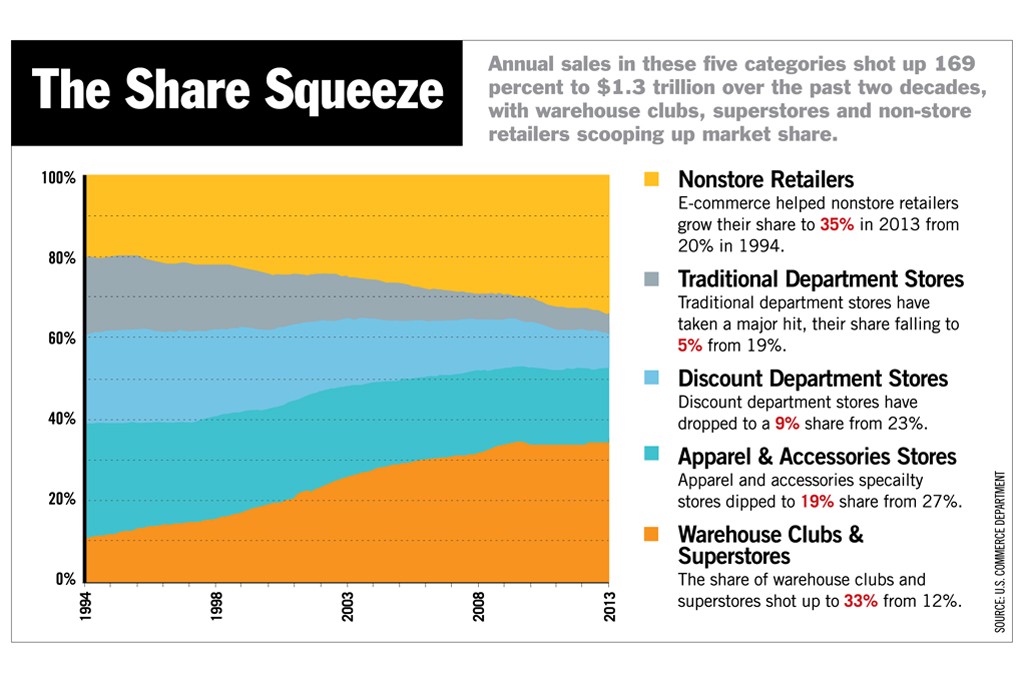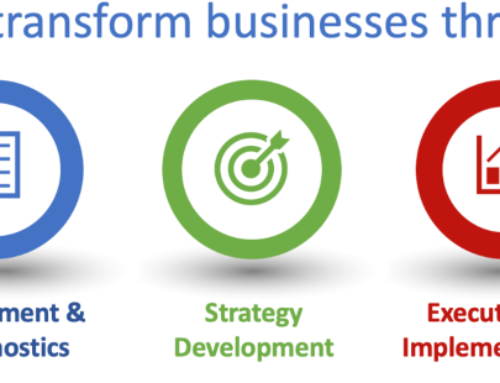An excellent article headlined “Retailing’s Battlefield: Fight for Market Share” written by Evan Clark appeared in the March 10 edition of WWD. Clark artfully and convincingly made the case of how aggressively and brutally the fight to win today’s consumer’s transactions and loyalty really is, and how strongly success, and even survival, depend on retailers’ constant injection of change into their business strategies—changes in product categories and mix, changes in distribution channels, changes in pricing, changes in the paths used to reach their customers with their marketing messages. I agree that the magnitude and the pace of change have never been greater, but having worked in the retail industry for nearly 50 years, (I started working in an IGA grocery store at age 14), I also note that the industry has always experienced and been driven by significant change. Granted, current changes are dramatic, but in fact they are simply the current events in an evolutionary process which has over the years been responsible for the customer’s continued motivation to buy. And, just as in the evolutionary process in nature, the ability of retailers to adapt to and adopt change into their business strategies has, and continues, to determine their chances of continued existence.
I’m reminded often of late of a conversation in the early 70’s with Bella Wexner, Les Wexner’s mother, who at the time was buying dresses for the Limited where I was a young 26 year old store manager. Mrs. Wexner, and her husband Harry, were two of my greatest teachers and her lesson on that particular day, shaking her finger at her young student was “Remember Bob! New is New!” It was far too much to expect that I, with my lack of maturity and experience, would have the slightest idea what she was trying to make me understand. But as the years have passed, and particularly now, I fully grasp the wisdom in those three words. The message was that customers love “new” and the industry must continuously feed them with newness to retain their interest and incent them to spend.
When major malls began to emerge, city by city across the country, consumers quickly and enthusiastically moved their shopping visits to these huge buildings filled with exciting new retailers organized and presented in an exciting new environment, while the downtown shopping areas quickly became retail fossils. And not only did the customers transfer their purchases to the new venue, they also purchased more, motivated by the exposure to what they hadn’t before experienced. New is New!
The advent of the big box format in diverse categories, office supplies, hardware, electronics, etc produced a tsunami of change in each segment in which it was introduced. Imagine the rush felt by an electronics junkie when first visiting a Best Buy and confronting that vast assortment of product under one roof. Or, think about the experience of the American “everyman” upon first visiting a Home Depot store. He left the store with a cartful of items he hadn’t intended to buy and instantly became a HD convert. In every case the customer again transferred their spending to the new format and they spent more. And, in the process, Radio Shack, the local hardware store, and the independent office supply store, all became relics of a retail era gone by. New is New!
There is a Costco close to my home in Connecticut, and I am a frequent and loyal customer, always impressed by their formula and their execution. However, buildable real estate in the northeast is scarce and expensive and this smaller format local Costco, like the local Whole foods, is simply not large enough for either of them to flex all their retail muscle. I recently visited a “real” Costco in Phoenix which incorporated all its power and even though I’m a tough audience, jaded by years of walking through retail stores. I was absolutely in awe of the scale, the offering, the pricing, and most of all by the hordes of people pouring in from a three level parking garage and leaving with carts overflowing and smiles on their faces. Compare the Costco experience to the ancient and decaying relic called K-Mart which paved the way to the emergence of Costco. Customers are transferring their shopping to the new entry and buying more. New is New!
There are endless examples of retailers surging ahead in market share by inventing and reinventing while others are left behind. Sephora and Bath and Body became competitive giants overnight, attacking the department store beauty floor, Apple put technology, presentation, and service together in a new format which rocked the computing and communications sector, and Zara and H&M have found ways to give the trend addicted fashion customer new, trend right, priced right, fresh fashion every week, while vendors and department stores labor on with a market week, “buy the whole season system” that was developed when buyers still traveled to New York by train. All of these new innovators have drawn customers from established formats and the customers’ purchases increased driven by the excitement of the new formats. New is New!
And now, enter the all powerful web, granting the customer access to virtually every product in the world, 24 hours a day, 365 days a year, from wherever they happen to be in the world, , via any web enabled device they choose. And once again the customer has responded in the same way they have responded to disruptive change in the past. They have responded to the most radical change in the history of the industry, not only to changes in the way they access the product assortments, but also to the dramatically enhanced digital methods of marketing to them. They have again shifted their purchases to the new channel and they are buying more. New is New!
As one lives longer, pays attention, and participates in the consumer marketplace, patterns emerge. Much is being written today about our industry being revolutionized. But, it’s apparent to me that it has always been experiencing revolution. And, it’s equally apparent that companies who have created newness or improved on competitors’ newness, and gone with the flow versus clinging to totally outmoded business strategies, have consistently been the winners in our industry throughout its history. They will also be the victors on the retail battlefield described in Clark’s exceptional article which is attached.
You were right Mrs. Wexner and now I understand—New is New!





